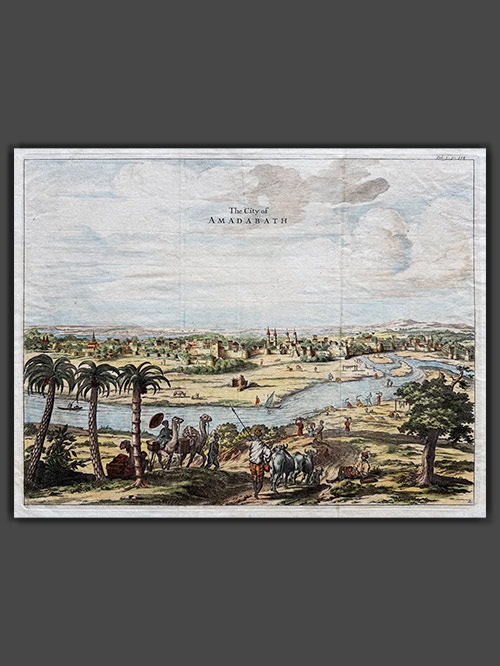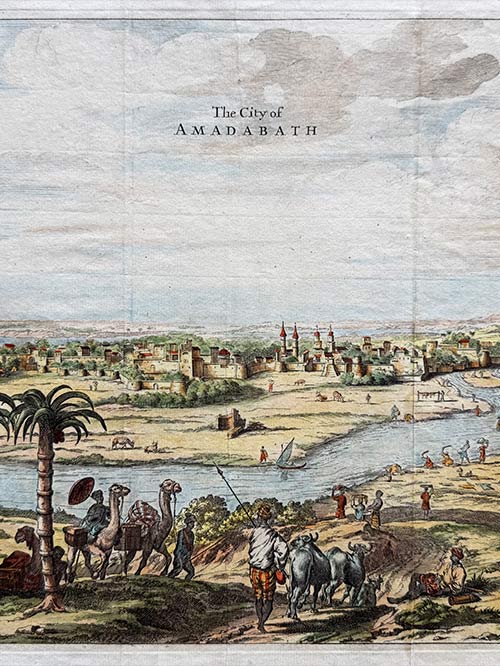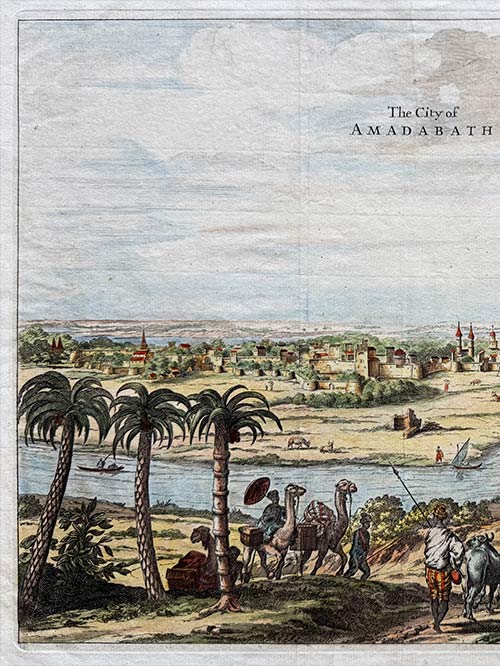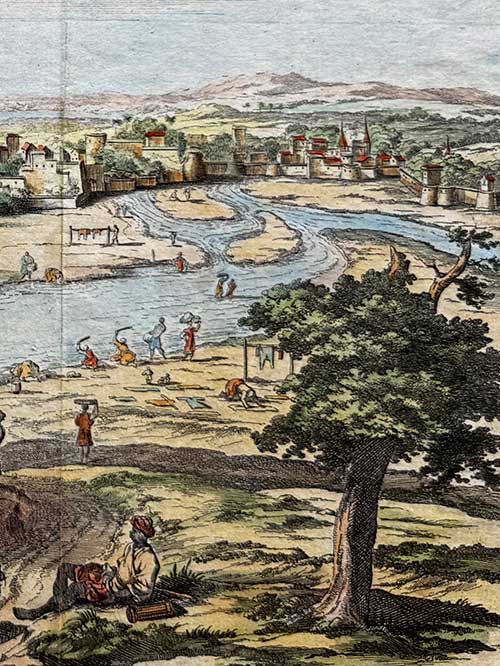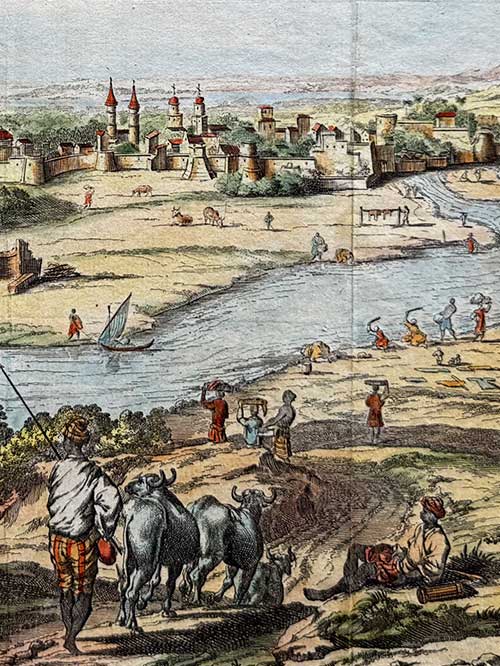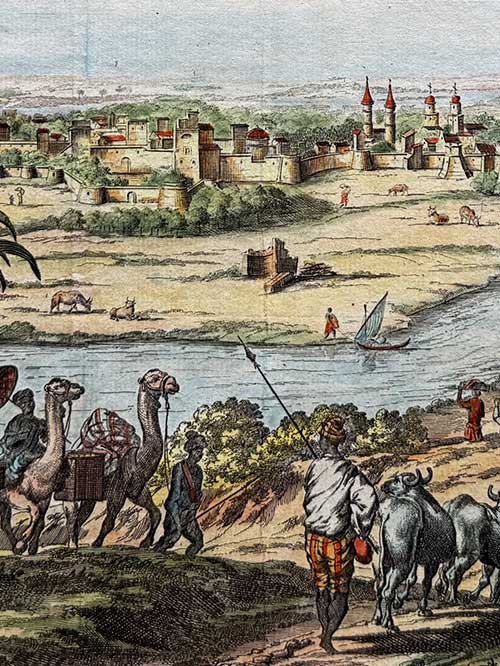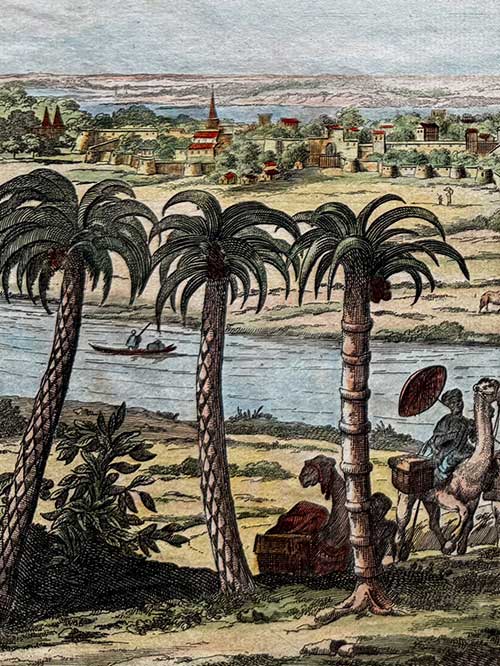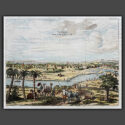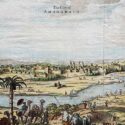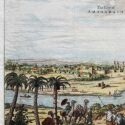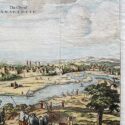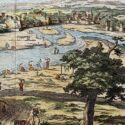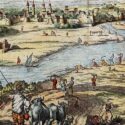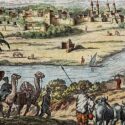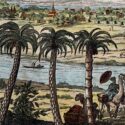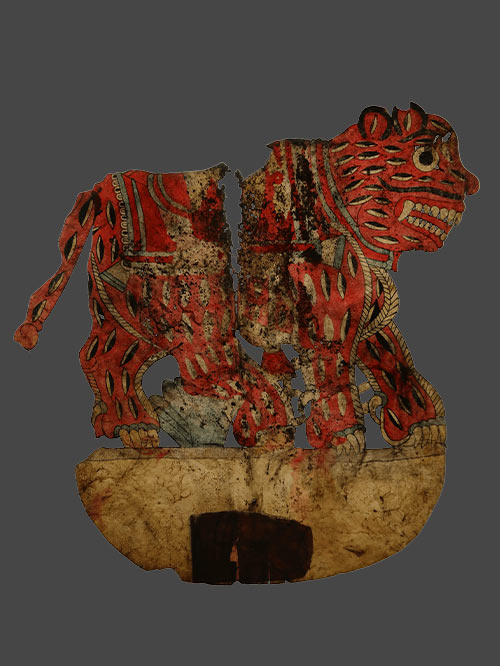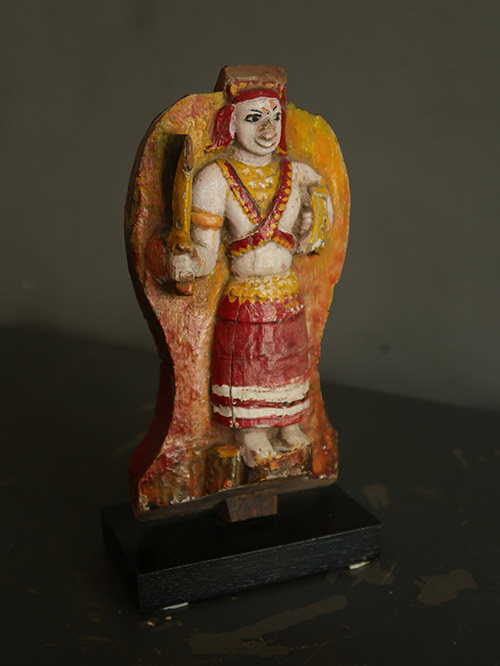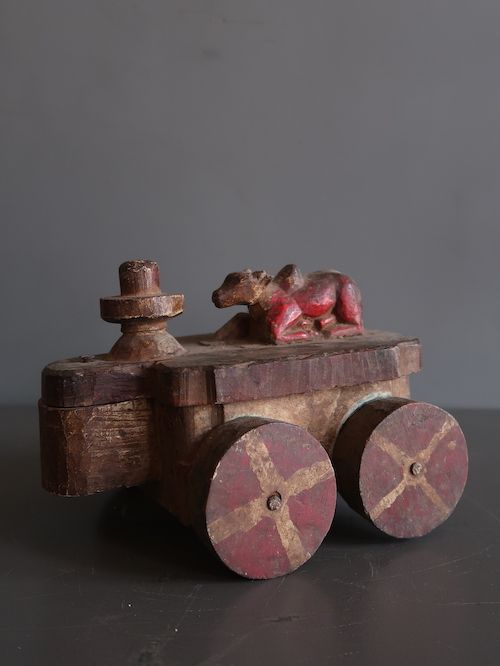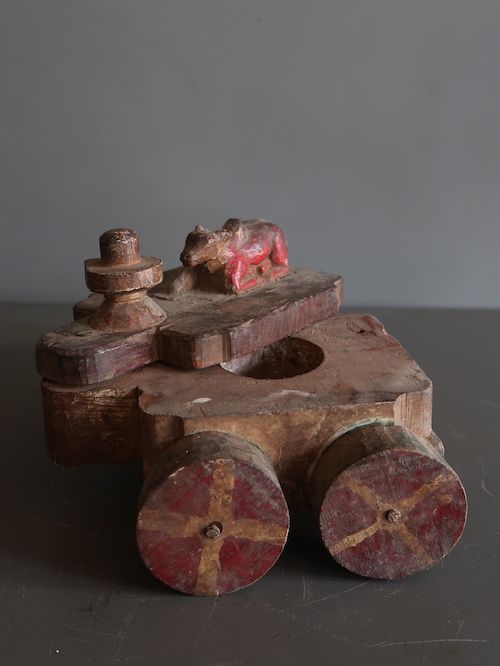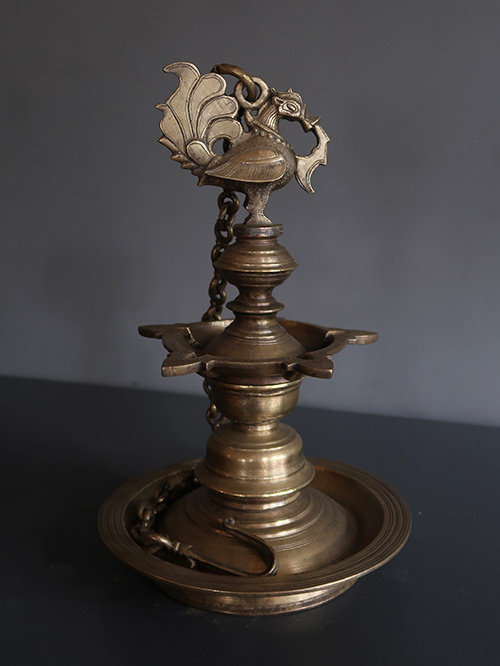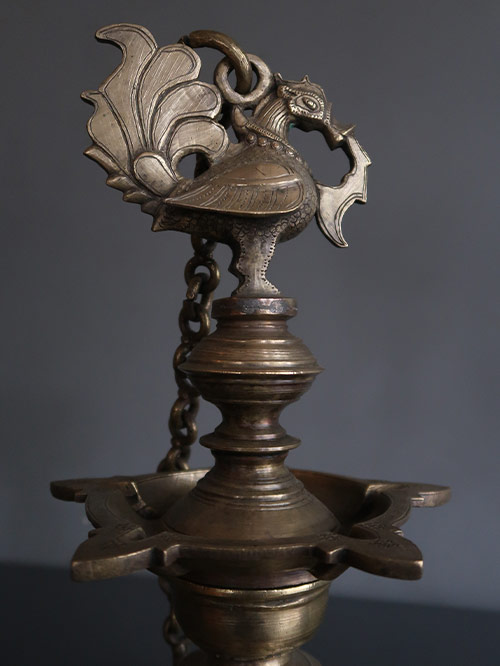View of Ahmedabad
Original engraved plan by Phillipus Baldaeus (1632-1672)
This original engraved plan by Phillipus Baldaeus (1632–1672) appears in Naauwkeurige Beschryvinge van Malabar en Choromandel (1672) and was re-issued in A Collection of Voyages & Travels (1704–52). Baldaeus, a Dutch Reformed Church minister, served in the Dutch East Indies and documented South India and Ceylon’s culture, history, and religion. Fluent in Tamil, Portuguese, and Sanskrit, he was among the first Europeans to extensively write about Hinduism, introducing Indian mythology, the Ramayana, and the Mahabharata to European audiences.
Ahmedabad, Gujarat’s largest city, is located along the Sabarmati River in western India. Established in 1411, by Ahmed Shah I of the Gujarat Sultanate, it became a political and economic center. While its origins trace back to the 12th century under the Solanki dynasty, the city thrived during the Sultanate (1411–1511) and experienced renewed prosperity under Mughal rule (1572–1707). Once hailed as ‘the greatest city in India,’ Ahmedabad was renowned for its rich silks and gold-embroidered textiles, attracting traders like the Dutch and English.
The Dutch East India Company (VOC) played a significant role in Ahmedabad’s history from 1615 to 1744. They established the Dutch Factory, or ‘Dutch Haveli,’ in 1617, a complex inspired by Indo-Islamic and Mughal architecture with elegant arches and asymmetrical wings. The factory was a hub for trading cotton, indigo, and silk yarn. Additionally, the Dutch cemetery in Ahmedabad remains a historical marker of their influence and the lives of those who settled in the city.
Image Size (cms): 30(H) x 37(W)
Image Size (inches): 12(H) x 14.5(W)

